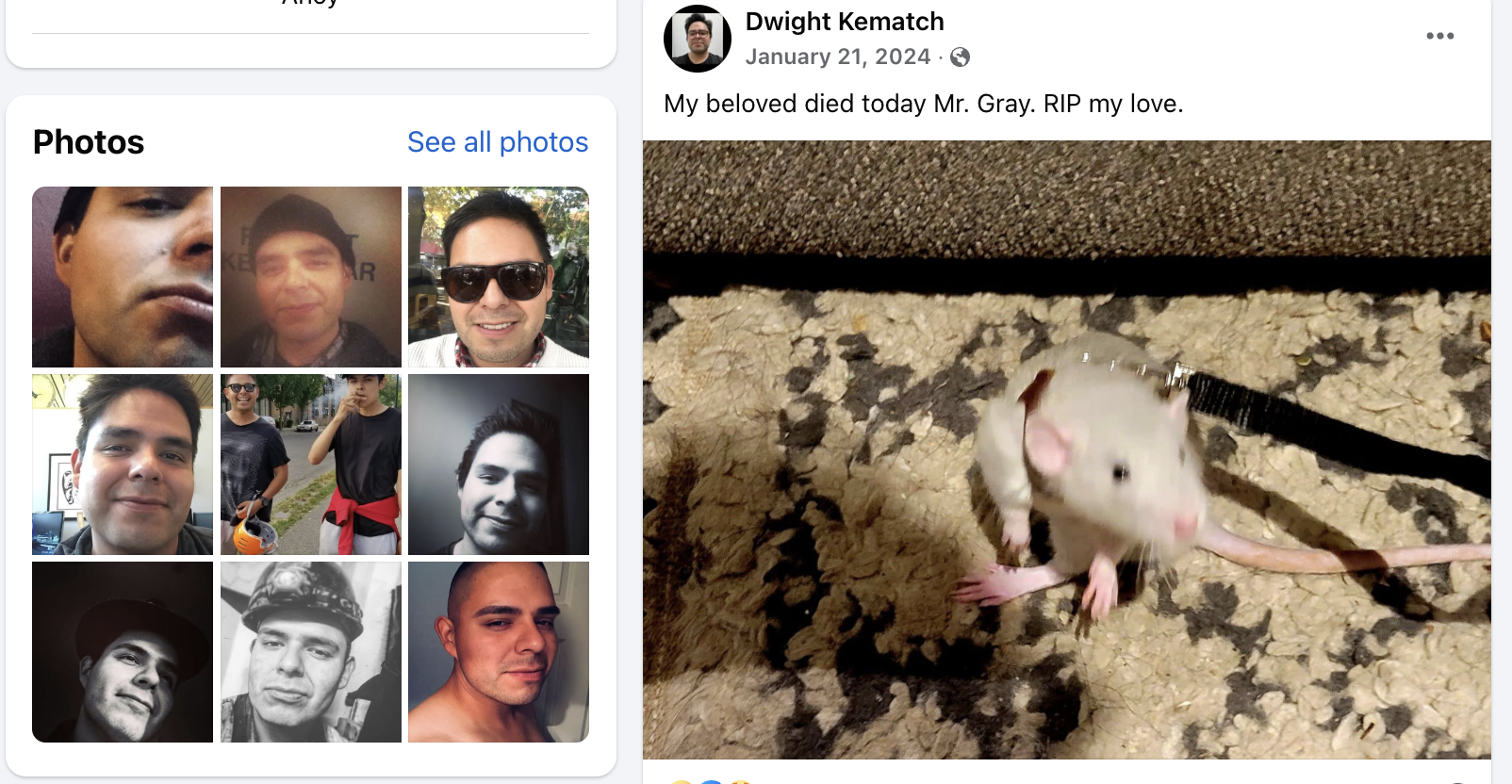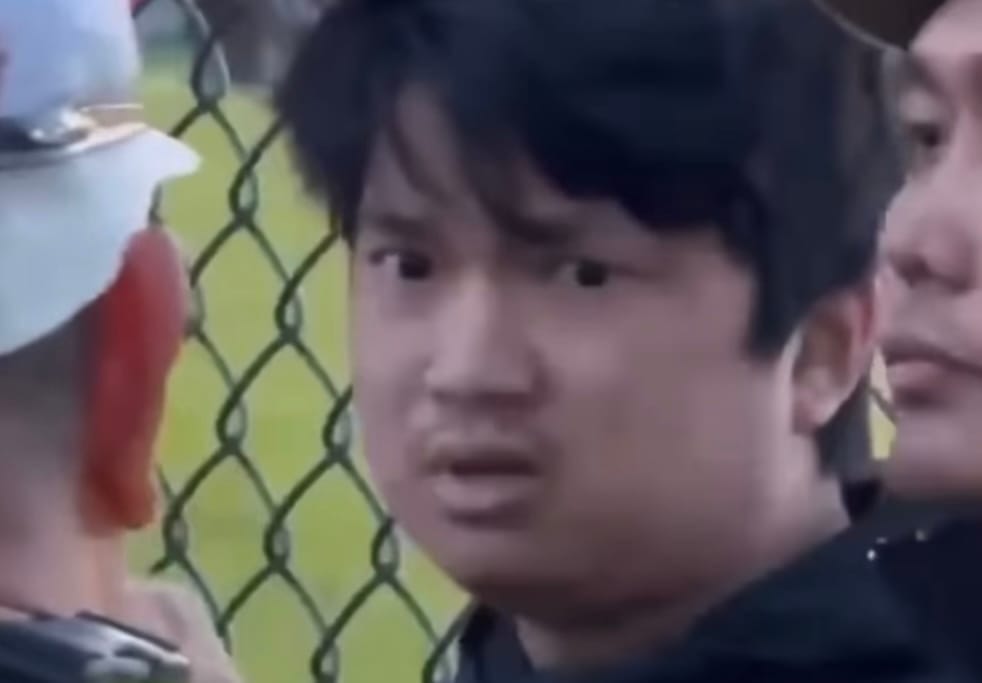Ticking time bombs roam Canadian streets in the wake of de-institutionalization
Robert, Dwight, and Adam: Three different men struggling with mental health challenges committing heinous acts that seem to be unpreventable
Robert
Robert Giesbrecht was born in 1984 in Haiti. He had a “tough upbringing” in the late 1980s in an orphanage. He was adopted by a family in Abbotsford around 1992, a family that was certainly hoping to save him, give him a good life in Canada.
With some level of developmental issues formed in his tumultuous early years, Giesbrecht also suffered from psychiatric disorders. He also had a history of violence leading up to a night seven years ago when the 34-year-old was insulted after asking for crack cocaine from people camped under the awning of the old Auld Phillips shop on Yale Road in Chilliwack. In 2010, he was convicted of two counts of assault with a weapon in Abbotsford and was found not criminally responsible on account of mental disorder (NCR).
When Giesbrecht drove up and asked people for drugs on the night of March 3, 2018, one woman told him to get lost, which angered him. He left, then came back brandishing a large utility knife. One man in the group tried to fend him off with a skateboard, but Giesbrecht sliced him from the middle of his left cheek to his right cheek.
Giesbrecht had served the equivalent of 1,046 days before his sentencing in 2020 for the 2018 incident, so he was given two years less a day (essentially time served) followed by three years probation.
At one point, Giesbrecht spent time at Colony Farm, one of the remnants of the notorious Riverview Hospital, after he was diagnosed as schizophrenic. He was later discharged and was apparently living life without exhibiting signs of mental illness, according to the public prosecutor at his sentencing hearing.
Dwight
Dwight William Kematch was working in construction and living in downtown Vancouver in 2023.
He posted images and videos of his pet rat on Facebook, as well as examples of his music compositions, photos from work sites, Seattle Pride, and memes in support of Indigenous land rights.

On Nov. 17, 2023, he posted something cryptic: “I’m so happy the Vancouver Police Department are concerned about my well being. So who the hell thinks I am down and out in life?”
That was his third last visible post on his Facebook account. Then on Jan. 14, 2024, he changed his profile photo. In it he has a Mona Lisa smile, five o’clock shadow, stylish glasses.
His last post on Jan. 21, 2024, was a blurry photo of a white rat with pink feet and tail wearing a tiny harness looking up at the camera, with the words: “My beloved died today Mr. Gray. RIP my love.”
Four days after that, on Jan. 25, the 39-year-old used his Facebook account to message Amer Ghalib, the mayor of Hamtramck, Michigan, 4,000 kilometres away, that he was going to kill him at the next city council meeting, Jan. 29.
"He specified the time and place, during city council meetings, so I took it seriously and I reported it to the police," Ghalib told The Detroit Free Press. "I have been receiving many threats, but never took any of them as serious. He sent his threat to me through Facebook, then he immediately blocked me…. I do not know what the motive is behind it."
A day before that city council meeting, Jan. 28, 2024, 31-year-old Alexander Lo was murdered inside a home on Henry Street, near East 33 Avenue and Knight Street in Vancouver. Kematch was arrested and charged with second-degree murder.
“They’re crushed,” Alexander’s friend Paul Forhan said. “The mother’s distraught. Alex’s brother is beside himself.”
Adam
Kai-Ji Adam Lo is that brother who was “beside himself” and was living with his mother in a house in East Vancouver.
While dealing with the trauma after the death of a brother and a son, Adam and his mother also struggled financially. They owed money on a 2018 Audi Q7, and had sued a contractor related to a project to build a laneway home at the house, according to documents accessed by CBC investigative reporter Jason Proctor.
Adam’s mother then apparently attempted suicide in August 2024, and he started a GoFundMe for her.
"I feared I had lost the only family member I have left ... I cannot stand to see her suffer anymore, and there's nothing I can do to help her."
Anyone would be traumatized by all of that. Adam was suffering. He was under the care of Vancouver Coastal Health's (VCH) mental-health team and was being supervised under the Mental Health Act, into 2025. Vancouver police said Adam had a “significant history of mental health interactions with officers.”
The exact nature of his mental health struggles is unclear, but a VCH spokesperson said Adam was on “extended leave” from hospital in accordance with the Mental Health Act, which allows for voluntary and involuntary treatment under two categories: "schizophrenia and other psychotic disorders" or "mood disorders," such as "bipolar and major depressive disorders."
"To the care team's knowledge, there was no recent change in his condition or noncompliance with his treatment plan that would've warranted him needing to be hospitalized involuntarily,” the VCH spokesperson told Proctor.
On April 26, 2025, Adam drove that Audi into crowds at the Lapu Lapu festival at East 41st and Fraser Street killing 11 people.
He is charged with eight counts of murder. There were reports he was in the midst of a schizophrenic episode when it happened.

No real thread
These three men have nothing direct to connect them, even the Dwight Kematch to Adam Lo thread is indirect through the alleged homicide of Adam’s brother.
And nothing has been revealed that Kematch was even suffering from serious mental health issues beyond his Facebook post stating that Vancouver Police did a wellness check on him in late 2024.
Adam Lo was being monitored by a team of mental health professionals and by all accounts was OK enough to be living on his own.
Robert Giesbrecht had developmental issues and a history of psychiatric disorders, but was not exhibiting signs of mental illness when he slashed a homeless man across the face with a utility knife, a court was told.
What these three men have in common is that 50 years ago they might have been housed at Riverview in Coquitlam, the notorious psychiatric institution that has existed in various forms on the site on a hillside for more than 100 years. Originally called The Hospital for the Mind on Mount Coquitlam, it was named Essondale when it officially opened for men in 1913.
With a reputation in the vein of One Flew Over the Cuckoo’s Nest, by as early as the 1970s professionals started to realize this was not humane or a helpful way of dealing with mentally ill people. Subsequent decades of horrific treatment of the mentally ill, several public reports, along with advances in science and progressive ideals in how we deal with people in these states, Riverview was shut down piece by piece.
At it’s peak, with traumatized soldiers returning from the Second World War, Riverview had a population of approximately 4,700 resident patients.
Since then, being sent to the “loony bin” – which is now referred to as “involuntary care” – slowly went the way of lobotomies and straight jackets.
What has resulted in the decades since then has, many argue, gone too far the other way.
Combined with an opioid crisis, several economic calamities, and a global pandemic, there are streets in every city in North America where one can witness people walking around who, at least to the lay observer, maybe should not be walking around on their own.
To be clear, the vast majority of people who commit serious crimes are not mentally ill, and the vast majority of people who are mentally ill do not commit crimes.
Sometimes, however, as we have seen time and again, one of these ticking time bombs go off. And while we would never go back to popping straight jackets on people who are fighting their own demons and warehousing them to be overseen by Nurse Ratched, the public discourse inevitably returns to the subject of involuntary care.
No answers
All of the above are just observations based on sparse information about there different men, three very different realities, three different and ever-changing psychological states.
Adam Lo was clearly suffering with mental health issues but had a team of professionals monitoring him who thought he could manage in the community. He is now in jail awaiting to face eight murder charges, and 11 people are dead. No matter what happens, he will likely never be released from some form of custody.
Dwight Kematch had no criminal history, according to court services online. Beyond some odd statements he made on Facebook leading up to a bizarre threat to a U.S. mayor, no one could have predicted he would kill Adam Lo’s brother, as he allegedly did. He is also in jail, unlikely to get out any time soon if convicted.
Robert Giesbrecht on the other hand hasn’t killed anyone. He was convicted of two counts of assault with a weapon in 2010, eight years before the face-slashing incident. He was found not criminally responsible on account of mental disorder (NCR) in that 2010 case. His three years probation for the 2018 slashing sentence would have ended in 2023.
How has he been doing since then?
Without knowing anything about the state of his mental health, Giesbrecht was convicted of assault and wilfully resisting arrest for an incident in Mission on March 26, 2024. He was convicted of assault with a weapon for an incident in Abbotsford on July 19, 2024. And he was convicted of assault with a weapon, assault, and wilfully resisting arrest for an incident also in Abbotsford six days later, on July 25, 2024. Charges were dropped against him for an alleged robbery on Aug. 18, 2024.
All of the above cases were wrapped up in Abbotsford provincial court on April 17, 2025. He received 18 months probation and is, presumably, living in the community under court-ordered conditions.
After a lifetime of mental health problems and 15 years of criminal convictions, is Robert Giesbrecht OK now? Is he manageable in the community? Is he a ticking time bomb?
Lots of people will have expressed opinions and made decisions about Giesbrecht's mental health and his risk to reoffend leading up to his last court appearance.
But really, how on Earth can we know what’s next?
-30-
Want to support independent journalism?
Consider becoming a paid subscriber or make a one-time donation so I can continue this work.
Paul J. Henderson
pauljhenderson@gmail.com
facebook.com/PaulJHendersonJournalist
instagram.com/wordsarehard_pjh
x.com/PeeJayAitch
wordsarehard-pjh.bsky.social
